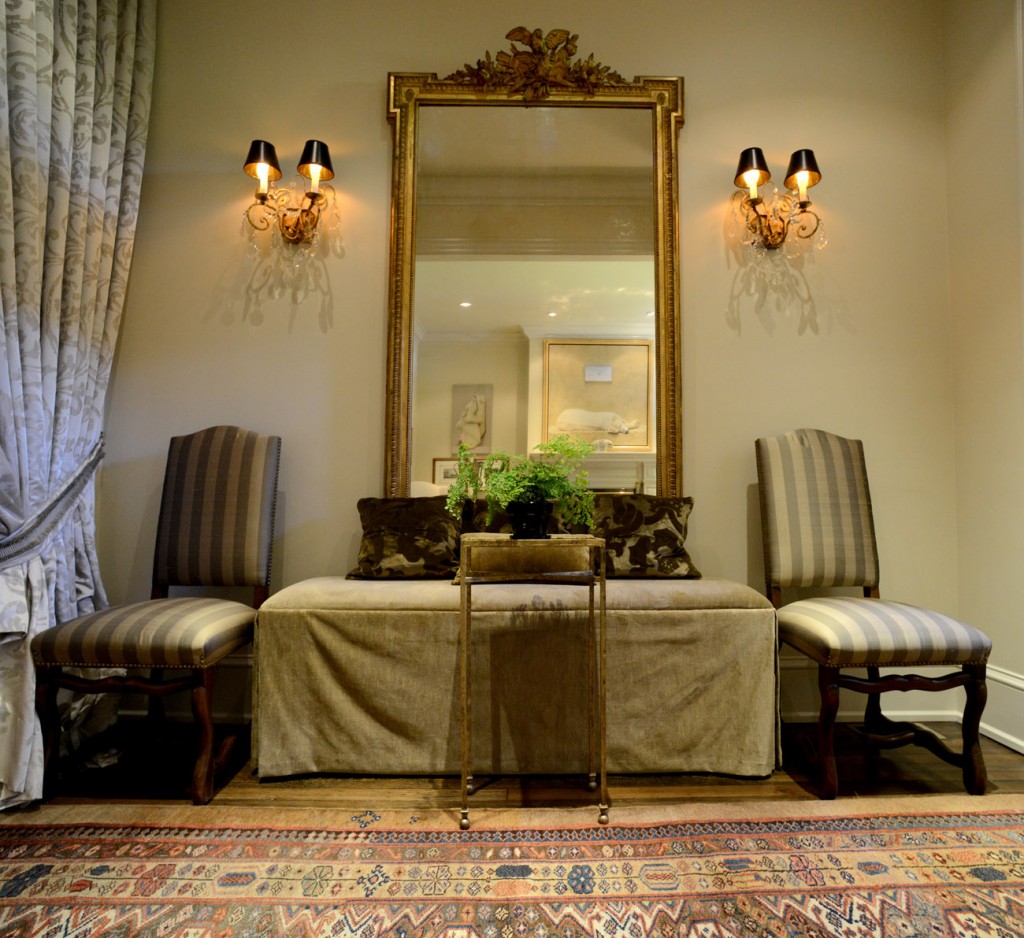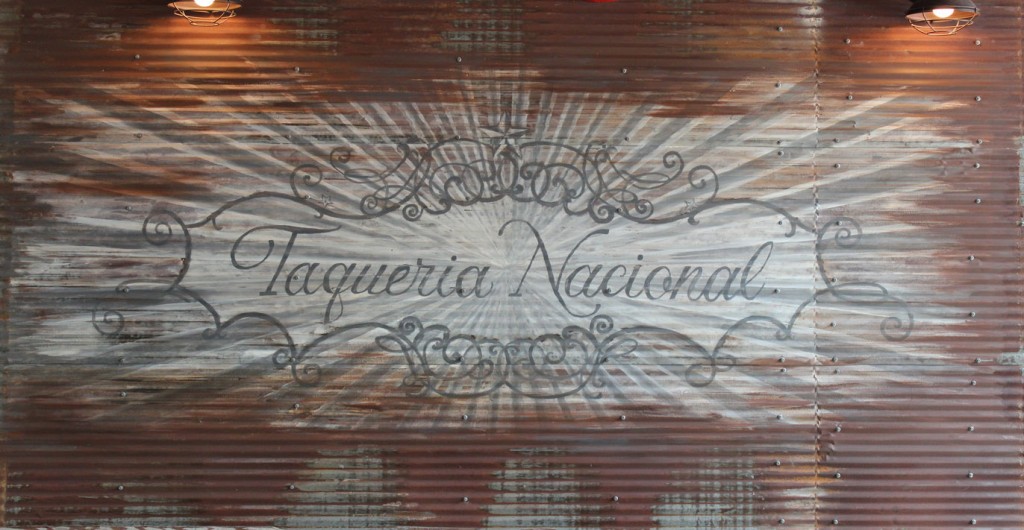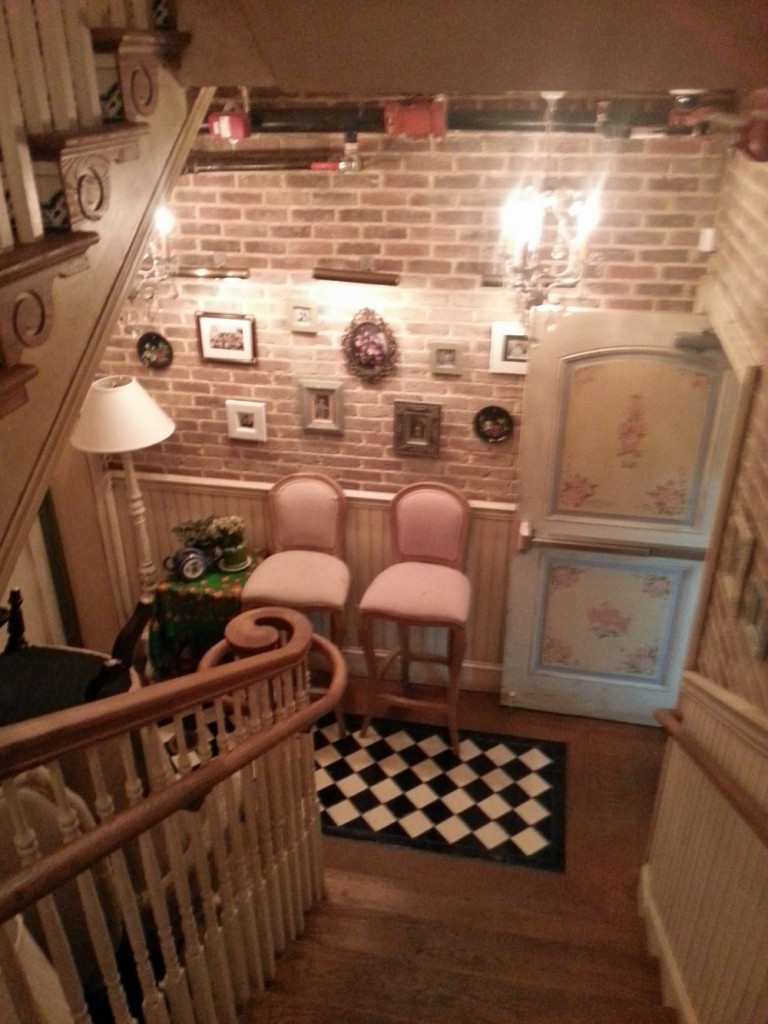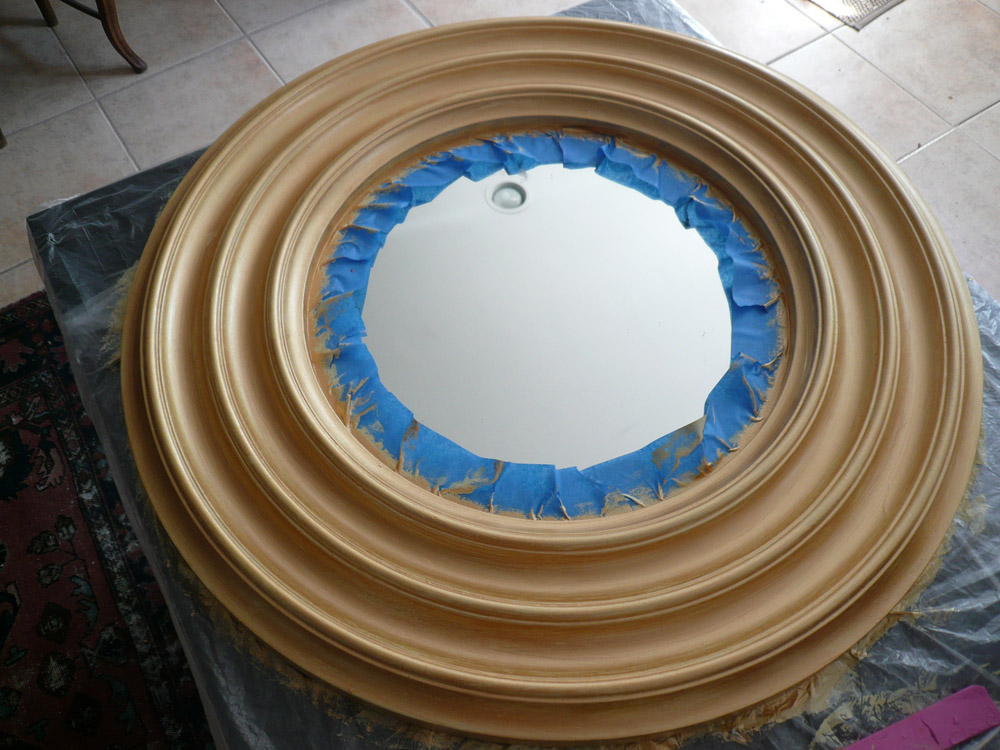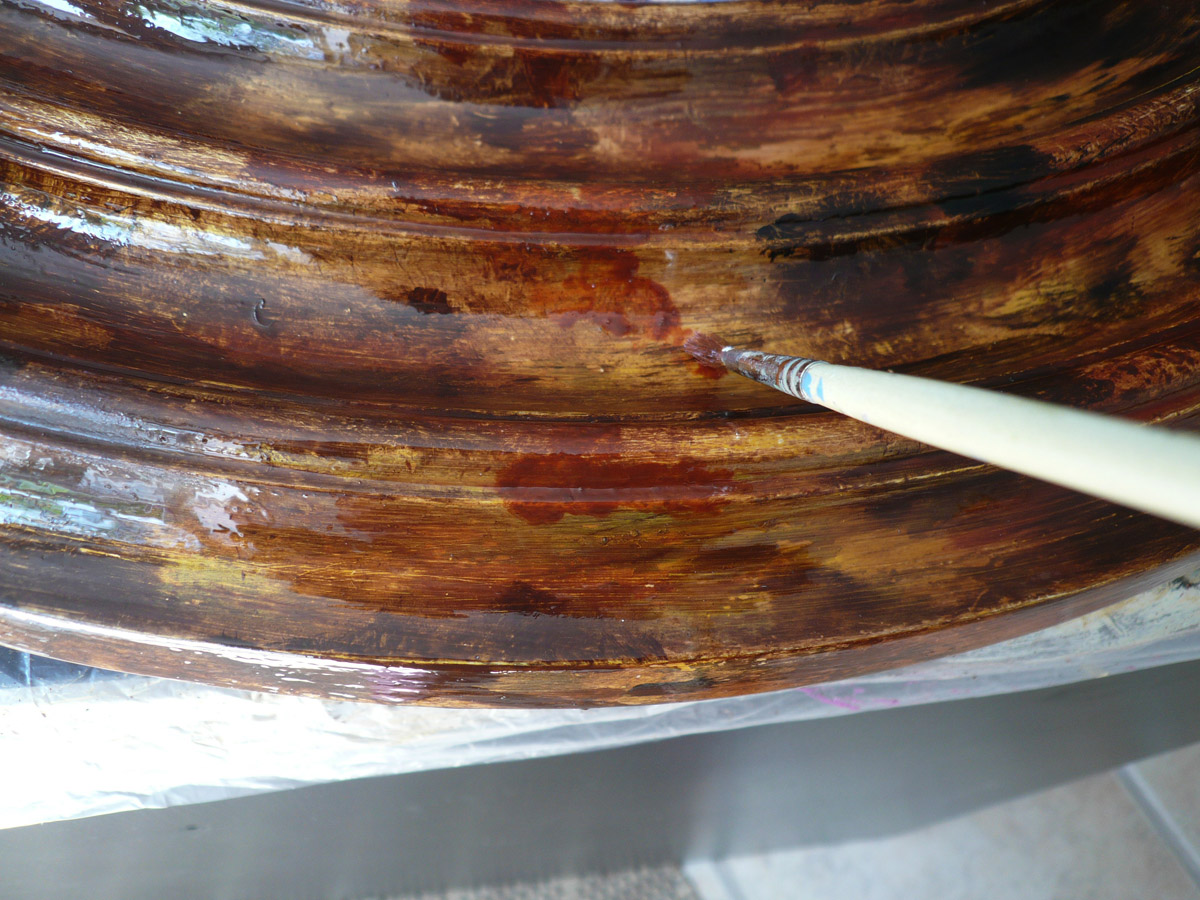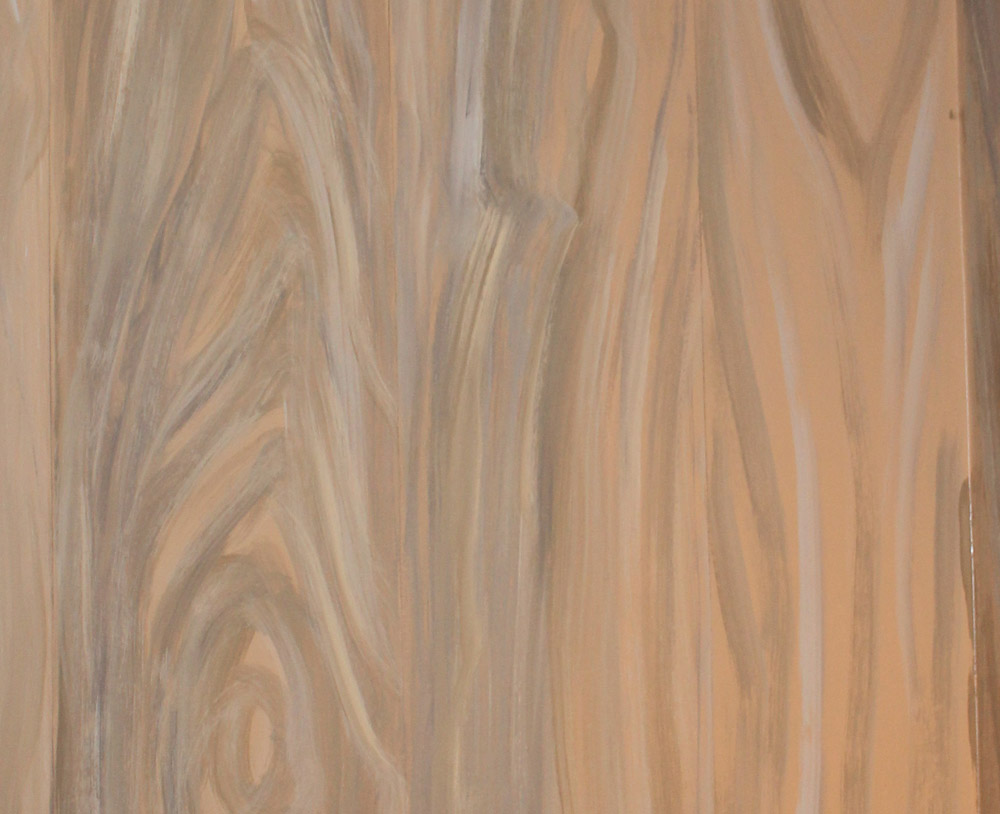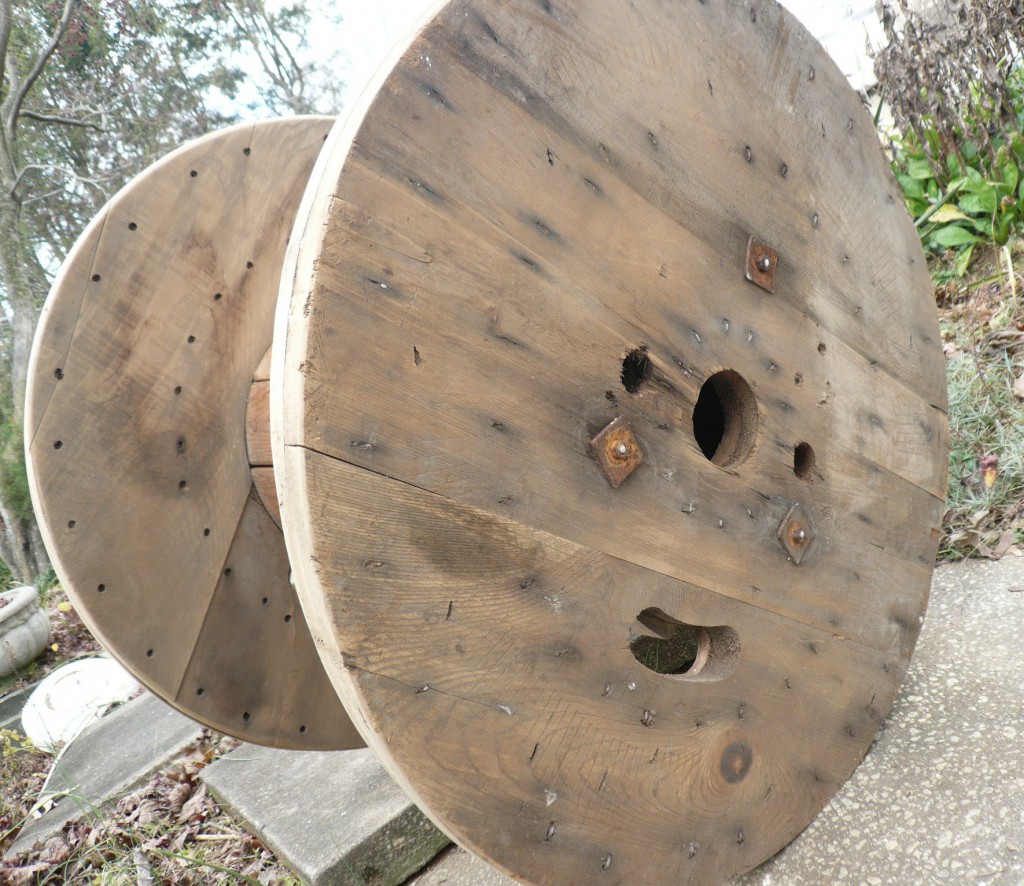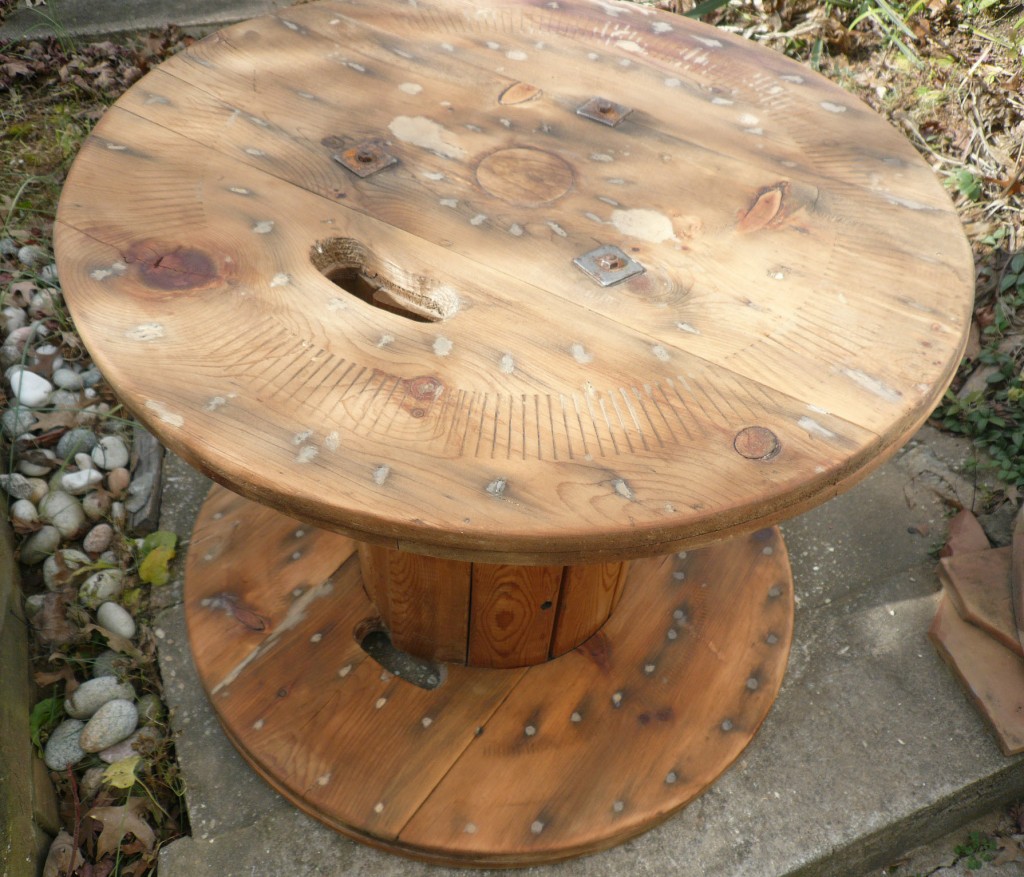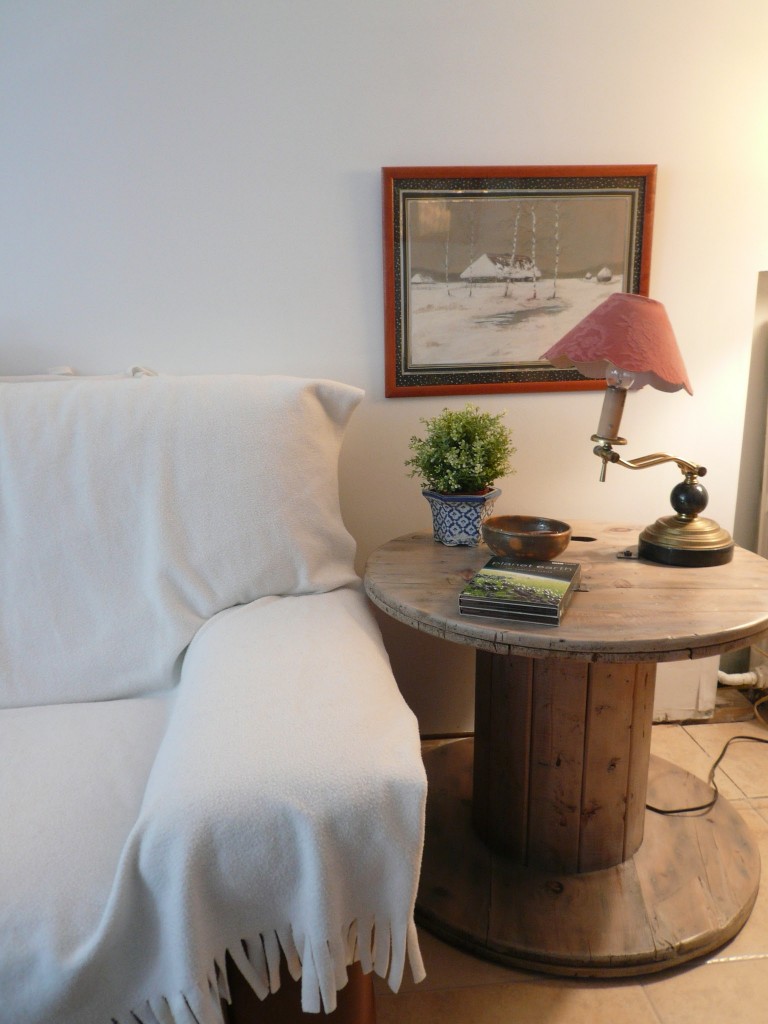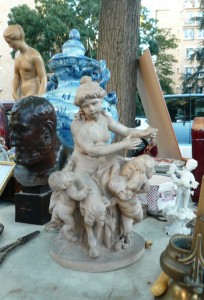When one says “gilded”, you envision a glossy shiny gold finish. But this is not always so; it is true that straight gilding is done by 1) applying a base coat, 2) brushing size on the piece (glue size is a liquid adhesive material to adhere gold leaves to a surface that is being gilded), and 3) placing gold transfer leaves. Or, as explained throughout this post, one may prefer subtle gilding to transform, for instance, new-looking pieces. In our case, we will turn a console and a wall sconce into old distressed (not destroyed) gilded antiques.
Before starting, you need to know precisely what look you are aiming to achieve – what shade of gold do you desire? What background colors do you want to reveal behind the gold? The chosen colors have to be harmonious to achieve fakery. Faux finishing is not at all a happy-go-lucky trade.
The consoles I worked with were white and the wall sconces were black. Here are one of each below:
From the beginning I was targeting a seventeenth- or eighteenth-century look. I would use a lot of dark grey and some silvery grey, then accompany those colors with a dirty brown simulating dirt accumulated over centuries. On many gilded furniture, the gold base is blood red, which also yields wonderful results, but I wanted to explore a more discreet and authentic look.
Using Benjamin Moore latex paints, I started by coating the table with a tan-colored primer. I then covered it by two dark bronze/brown layers of paint, applied next to each other in a patchy pattern. Once they were dried, I brushed the piece with Smoke metallic paint, ragging it off to leave tracks of it only in the recessed parts. Again, I waited for this coat to dry to randomly apply a layer of iridescent gold that I also partly ragged off, but this time, I left some of it onto recessed as well as raised parts.
Once the base coats were thoroughly dry, I brushed size all over the pieces. Approximately one hour after its application, the size still being tacky, I started applying the gold leaves. Different gold leaves are available in art stores. Some are regular squares coming in every shade of gold. The variety I picked was pale gold, with a peculiar consistency that disintegrates as it comes in contact with the size. As a result, when gluing the entire square to the piece, only fragments of the leaf adhere, leaving irregular tracks of gold that simulate a distressed gold finish.
I repeated the application many times until I felt that enough gold had been applied.
A certain amount of gold had to be applied to convey a rich and intriguing shine, set out by the various undercoated tones.
The next step was to age the gold leaf by rubbing (burnishing) a diluted dark grey brown latex paint on its surface and ragging it off to preserve the gold shine and mute the recessed parts.
I aimed to demonstrate that the quality of the gilded piece was still dominant despite the defacing it incurred from the passing of time.
At last, the newly faux finished furniture/object received a water-based varnish, with semi gloss sheen, to protect them. Et voilà, that’s how it’s done!
As a final remark, I will add that one should expect the gold metal leaf to yellow a little bit more than its original tone.
The consoles can be placed side by side with any valuable collectibles.








